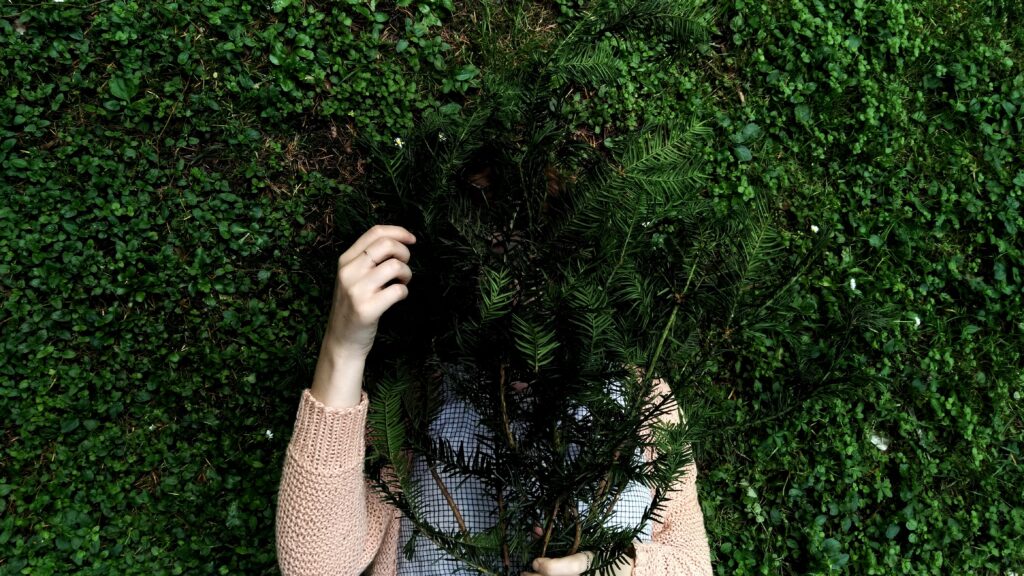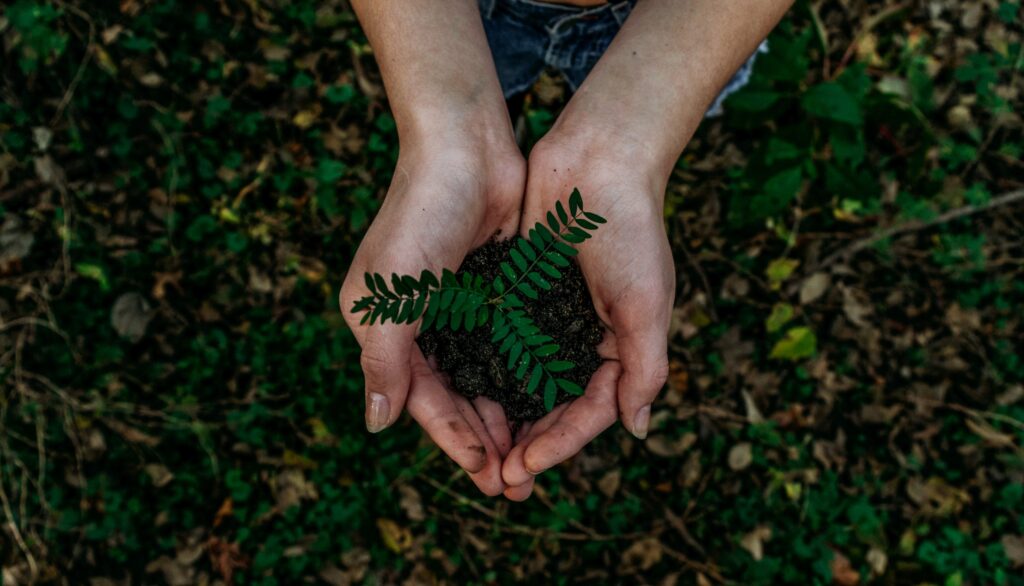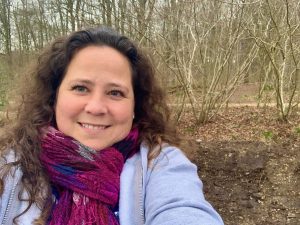Sitting on a platform waiting for a train, you look up at the departure board and see it’s going to be ten minutes late.
You sigh as you take another sip of water and glance at your watch, starting to get anxious about getting to your meeting on time. The sun comes out from behind a cloud, casting shadows over the line from the canopy above and warms your face as you put your book to one side. You place your hands in your lap. Alongside the track, a patch of urban wilderness has grown up around a discarded shed and your attention strays to a common blue butterfly fussing over buddleia. Noticing a little disruption in the longer grasses, you catch sight of a vole making a dash over the warm stony ballast, towards a tiny gap in a slab of old concrete, split open by persistent weeds. The sun goes in and you draw your coat over your shoulders, just as your train comes round the bend.
You’ll still be late for your meeting but perhaps now, you care a little less.
Can you relate to this?
The effect of nature on wellbeing
Be honest with yourself, how connected to nature do you feel on a daily basis?
Taking time out in the wild can reduce cortisol levels, increase our resilience to cancer and lower blood pressure so it’s an important question for us all, particularly if we want to enjoy a long, happy and healthy life.

That nature is a therapy for our wellbeing will I’m sure, come as no surprise. And consider that until relatively recently, in terms of human history, we were an inconspicuous species. We were both hunter and prey, sitting at the more comfortable end of the food chain but by no means at the top. No more or less special than ladybirds, zebras and my beloved hedgehogs.
Since then, we’ve gained so much: complex stories, knowledge, communication and technology. We can explore and even leave the planet and our ability to understand and heal the human body has led to anaesthetics, organ transplants, genomic science and neurosurgery.
We’ve reduced maternal morbidity for many and increased life expectancy in most parts of the world.
Progress? At what cost?
In order to preserve ourselves and our resources against the weather, weeds, pests, trauma, natural disasters and illness, it would seem we’ve lost our human connection to the earth. We became exceptional and, in the process, I believe we became removed from our natural surroundings.

Latest statistics from Friends of the Earth report that 20% of us in the UK are deprived of access to green space, with almost 40% of people from non-white backgrounds living in the most green-space deprived areas, compared to just 14% of white people. And we spend 95% of our time indoors, often attached to technology of some sort. Many still guffaw at the idea of nature therapy or that nature therapy can help wellbeing.
The caves we took to in order to escape the elements became brick and concrete boxes. The weeds and animals we tamed, tamed us back. We became bored with our labour-saved lives and sought out entertainment that made us stay indoors even more. Cooped up and shut away, we became subject to conditions like SAD (seasonal affective disorder), fearing winter, cold and rain. Nature even horrifies us; don’t get dirty, don’t jump in the puddle, don’t touch that insect… We have become fearful, fair-weather humans and I’m not sure it has done us any good.
Nature is ever-changing and its impermanence is so often one of its beauties (think of cherry blossoms blowing like snow in a spring breeze or the bright colours of autumn as the leaves fall). It’s also imperfect, resilient and escapes exact definition. It doesn’t fit easily into the conceptually clean and neat boxes western society has developed over the past few hundred years and we’ve been encouraged to see ourselves as above or apart from it. We think we’ve tamed or subdued nature, we are its masters.
Occasionally we’re reminded that we’re not.
Lost connections
We’ve left our nature connection behind and travelled far from our ancestral ways. We feel lonely: disconnected from our communities and our true selves (read more about the link between this and depression in Johann Hari’s book). To recover, I believe we need to go back to what we knew and what we’ve always known. I’m talking about a meaningful connection to nature rather than just time spent in nature. And I include connection to self, other humans and the more-than-human natural world when I refer to nature therapy for wellbeing.
Nature is in our bodies and by this, I mean our whole selves. We are nature. It’s about changing our view and seeing a composite human being instead of compartmentalising body and mind. We don’t need to learn how to reconnect, what we need to do is remember. Nature is in our DNA; it is our DNA. We spend all our time thinking and doing when our bodies are calling out for us to just be.
When it comes to nature connectedness, it would seem we may have taken the wrong path. But if five minutes at a railway station is all we need to reignite our curiosity in our surroundings and soothe our spirit, perhaps our longing to return to the wild is stronger than we think. Maybe if we take care of nature, it’ll take care of us back?
The time has come to rewild ourselves.

How do you connect with nature?
Nature connectedness involves more than walking or working outdoors. It’s more than gardening or playing sports. It goes so much deeper than this. The University of Derby and Professor Miles Richardson have documented five pathways to nature connection:
- Senses – finding pleasure in engaging with nature through your senses. If you’re by the sea, for example, what sound does the water make as it ebbs back over the shore? Pick up a pebble and closely examine its texture with your fingertips. Can you taste salt in the air?
- Beauty – how we personally process and understand the aesthetics of nature, and this may involve our own creative response, in art, journals or poetry.
- Meaning – we humans love to tell stories and our proficiency and enjoyment in sharing them are what set us apart from other species long ago. What does the first swallow of summer mean to you or the first cold, crisp morning of winter? Do you have a favourite tree?
- Emotion – developing a deep and lasting bond with nature. Being silent and allowing your feelings to rise and then talking about what you love and what moves you.
- Compassion – acknowledging your position in nature and your responsibility to do your part for it and this includes being conscious of your consumer choices and being concerned with animal welfare.

What is eco-anxiety?
In the following blogs in this blog series on nature therapy for wellbeing, I’ll describe some of the ways you can all get more nature-connected in everyday life. This will also help those of you who are already somewhat connected, and struggling to process the damage we’re doing to the natural world; plundering its resources, warming our seas and climate, destroying habitats and wiping out species in the process. Deepening our personal connection to nature, influencing those around us and doing ‘our bit’ where we can is how to treat rising levels of eco-anxiety.
The next post will be about the wonderful element of earth.
Subscribe to get the updates by clicking top right or sign up to my mailing list.
And in the meantime, why head over to my website to learn more about forest bathing or mindful photography.
About Sonya Dibbin and Adore Your Outdoors

Sonya is a qualified Forest Bathing (or Shinrin-Yoku) and Mindfulness Guide. She left her corporate life in early 2019 and now dedicates her time to helping small groups of humans rewild themselves with nature therapy.
Through guided meditations and calm invitations, she pilots them to play, experiment, photograph and explore their surroundings with a child-like fascination
She loves trees and moss with a passion and she’s proud of it. Despite not even owning a pair of wellies as a kid, she has overcome SAD (seasonal affective disorder) and even fallen in love with winter as an adult.
When she knew she was about to become a mother, she knew the best thing she could give her child was a love for all seasons – even winter.
Now she lives her dream. Spending more time outdoors, connecting with her too-often-side-lined creative side, and helping others live a happy and healthy life through nature therapy for wellbeing.
